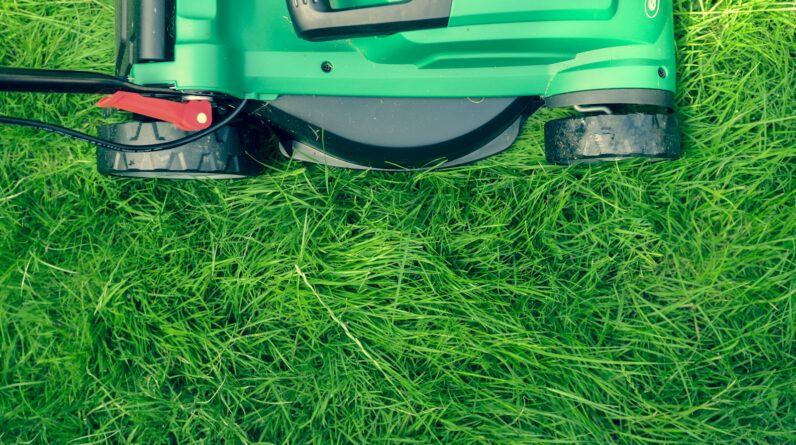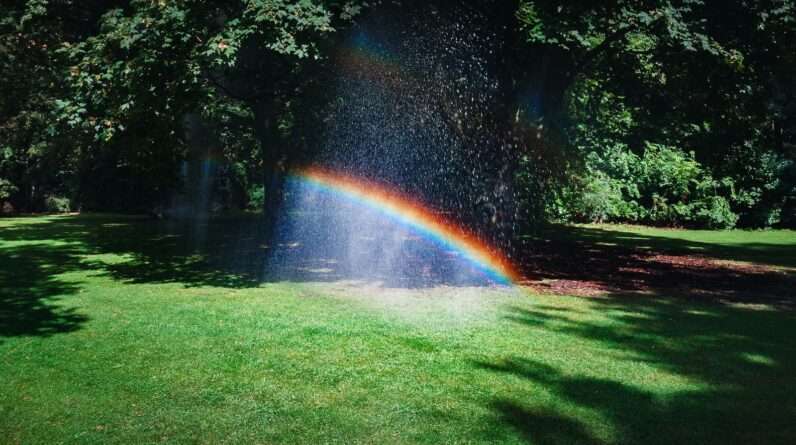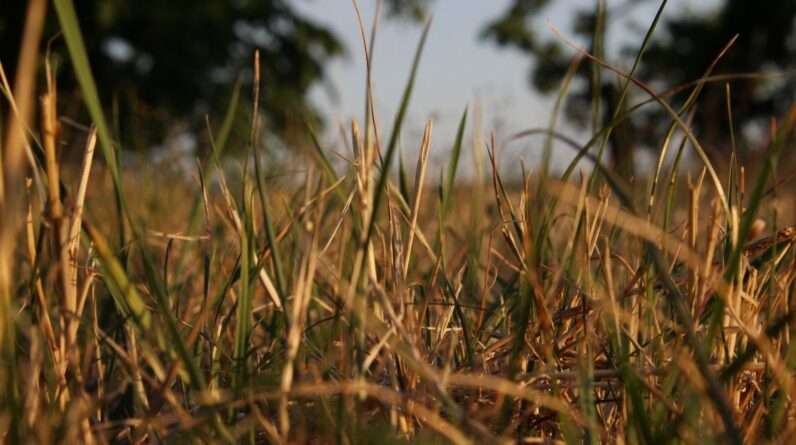
Are you tired of looking out at your lawn and seeing patchy, brown spots? It may be time to consider re-seeding your grass. But with so many different types of grass seed available, how do you choose the best one for your lawn? Don’t worry, we’ve got you covered. In this article, we will guide you through the process of choosing the best grass seed for your lawn, starting with understanding your climate and regional weather patterns.
Choosing the right type of grass seed for your lawn can make all the difference in the world. The right type of grass can not only improve the appearance of your lawn but can also make it more resistant to disease and pests. However, it’s important to consider factors such as sun exposure, soil type, and irrigation methods before making your final decision. Keep reading to learn more about how to choose the best grass seed for your lawn.
Understanding Your Climate and Regional Weather Patterns
You’ll want to take a closer look at your climate and weather patterns to ensure your lawn thrives. Different grasses require different amounts of sunlight, water, and temperature to grow. It’s important to research which grass types are best suited for your area. For example, warm-season grasses thrive in hot, humid climates, while cool-season grasses do well in cooler temperatures.
In addition to temperature, it’s important to consider rainfall patterns. If you live in an area with frequent rainfall, you may not need to choose a grass seed that requires a lot of watering. On the other hand, if you live in a drought-prone area, you’ll want to choose a grass seed that can withstand dry conditions. By understanding your climate and weather patterns, you can choose a grass seed that will thrive in your specific environment.
Choosing the Right Type of Grass Seed
It’s important to consider the specific climate and soil conditions of your region when deciding which type of grass seed to use for optimal growth and maintenance. The two main types of grass seed are cool-season and warm-season grasses. Cool-season grasses, such as Kentucky bluegrass and fescue, grow best in cooler regions with moderate rainfall. Warm-season grasses, such as Bermuda grass and Zoysia grass, thrive in warmer regions with plenty of sunshine and less rainfall.
In addition to the climate, it’s also important to consider the soil conditions when choosing the right type of grass seed. Some grasses, like fescue, can grow in a variety of soil types, while others, like Bermuda grass, require well-drained soil with good fertility. It’s a good idea to have your soil tested before selecting a grass seed to ensure that you are choosing the right type for your soil’s specific needs. By taking into account both the climate and soil conditions, you can choose the best grass seed for your lawn, which will ultimately lead to a healthier and more vibrant lawn.
Considering Factors Such as Sun Exposure, Soil Type, and Irrigation Methods
Taking into account factors such as sun exposure, soil type, and irrigation methods can greatly impact the health and overall appearance of your lawn. Before choosing a grass seed, it is important to assess these factors to ensure that your lawn will thrive. Sun exposure is one of the most important factors to consider when selecting a grass seed. If your lawn receives a lot of direct sunlight, you will want to choose a seed that is drought-resistant and can handle the heat. However, if your lawn is primarily shaded, you will need to choose a seed that can thrive in low-light conditions.
Another important factor to consider when selecting a grass seed is soil type. Different grasses thrive in different types of soil, so it is important to test your soil before choosing a seed. Sandy soil, for example, drains quickly and may require a seed that is drought-resistant. Clay soil, on the other hand, retains moisture and may require a seed that can handle wet conditions. Finally, irrigation methods are also an important consideration when selecting a grass seed. If you plan to water your lawn frequently, you may be able to choose a seed that requires less water. However, if you live in an area with water restrictions, you will need to choose a seed that is drought-resistant and can handle less water. By taking these factors into account, you can choose the best grass seed for your lawn and ensure that it will thrive for years to come.
Researching and Comparing Different Grass Seed Varieties
Researching and comparing various types of grass seeds can help you find the perfect match for your lawn’s specific needs and characteristics. There are several types of grass seeds available in the market, and each one has unique features that suit different environments. For instance, Kentucky bluegrass is an excellent choice for cooler regions, while Bermuda grass thrives in warmer areas. Additionally, some seeds require less watering and maintenance, making them ideal for busy homeowners. By doing thorough research and comparing different options, you can find the best grass seed for your lawn that will provide optimal growth and appearance.
When researching and comparing grass seeds, it’s essential to consider factors like germination rate, disease resistance, and the ability to withstand heavy foot traffic. Moreover, you should also look at the seed’s texture and color, as well as its growth rate and how often it needs to be mowed. By analyzing all these variables, you can determine the type of grass seed that is most suitable for your lawn. It’s also crucial to read reviews and consult with experts before making a final decision. Taking the time to research and compare different grass seed varieties can help you achieve a beautiful, healthy lawn that you can enjoy for years to come.
Tips for Planting and Maintaining Your Grass Seed for Optimal Growth
To ensure optimal growth for your new grass, make sure to water it regularly, mow it at the correct height, and fertilize it appropriately. Watering your grass seed regularly is crucial during the initial stage of growth. The first few weeks after planting are critical, and your lawn needs to receive enough water to keep the soil moist to allow the seeds to germinate. Once the seeds have sprouted, water your lawn deeply once or twice a week, depending on the weather conditions and the type of soil you have. It’s important to avoid overwatering as this can lead to root rot and other problems.
Mowing your grass at the correct height is also essential for optimal growth. Generally, you should mow your lawn when it reaches 3 to 4 inches in height. However, the recommended height varies depending on the type of grass you have. For example, Bermuda grass should be mowed at a height of 1 to 1.5 inches, while tall fescue should be mowed at a height of 2.5 to 3.5 inches. Remember to never remove more than one-third of the grass blade during a single mowing session. Also, make sure your mower blades are sharp to avoid damaging the grass blades and leaving ragged edges.
Finally, fertilizing your lawn is crucial for optimal growth and overall health. Choose a fertilizer that is appropriate for the type of grass you have and follow the instructions on the packaging carefully. Avoid overfertilizing, as this can lead to excessive growth, disease, and other problems. It’s best to fertilize your lawn in the fall and spring when the grass is actively growing. By following these tips, your grass seed will grow into a lush, healthy lawn that you can enjoy for years to come.
Frequently Asked Questions
How much grass seed should I use per square foot of my lawn?
To determine how much grass seed to use per square foot of your lawn, it’s important to consider factors such as the type of grass, soil conditions, and climate. Generally, it’s recommended to use 1-2 pounds of grass seed per 1000 square feet of lawn. However, it’s best to follow the specific instructions on the grass seed packaging for optimal results. Over-seeding can result in a dense, healthy lawn, while under-seeding can lead to patchiness and weak growth. By using the appropriate amount of grass seed and following proper lawn care practices, you can achieve a lush and beautiful lawn.
Can I mix different types of grass seed together for better results?
Mixing different types of grass seed together may seem like a good idea for achieving a more diverse and resilient lawn, but it’s generally not recommended. Different types of grass have different growing habits, growth rates, and maintenance requirements, which can result in an uneven and patchy lawn. Instead, it’s best to choose a single type of grass seed that is well-suited to your climate, soil type, and intended use of the lawn. This will ensure a consistent and healthy lawn that is easier to maintain and looks great all season long.
How long does it take for grass seed to germinate and grow?
It typically takes around 7-21 days for grass seed to germinate, depending on the type of seed and the conditions it’s planted in. Once the seed has germinated, it can take up to several weeks for the grass to grow to a height where it can be mowed. It’s important to ensure that the soil is moist and the temperature is optimal for the seed to germinate and grow properly. Additionally, regularly watering and fertilizing the grass can help it grow faster and healthier.
What are some common problems or diseases that can affect grass seed growth?
Common problems and diseases can hinder the growth of grass seed. These issues include fungal diseases like brown patch, dollar spot, and rust. Insects such as grubs and chinch bugs can also damage grass seedlings. Excessive shade, poor soil quality, and improper watering can also cause problems. It’s important to identify the specific issue affecting your grass seed and take appropriate action, such as applying fungicides or insecticides, improving soil quality, or adjusting watering practices.
Is it necessary to fertilize my lawn after planting grass seed?
It is not strictly necessary to fertilize your lawn after planting grass seed, but it can certainly help to promote healthy growth and development. Fertilization can provide essential nutrients that may be lacking in your soil, and can help to establish a strong root system for your grass. However, it is important to use the right type and amount of fertilizer, as over-fertilization can lead to burned grass and other issues. Be sure to follow the instructions carefully, and consider consulting with a lawn care professional if you are unsure about the best approach for your specific situation.
Conclusion
In conclusion, choosing the best grass seed for your lawn is a crucial step in achieving a lush and healthy lawn. By understanding your climate and regional weather patterns, choosing the right type of grass seed, considering factors such as sun exposure, soil type, and irrigation methods, researching and comparing different grass seed varieties, and following tips for planting and maintaining your grass seed, you can ensure optimal growth and a beautiful lawn.
Remember to take the time to do your research and choose a grass seed that is best suited for your specific needs. With the right care and maintenance, your lawn will thrive and provide a beautiful backdrop for all of your outdoor activities. Happy planting!












